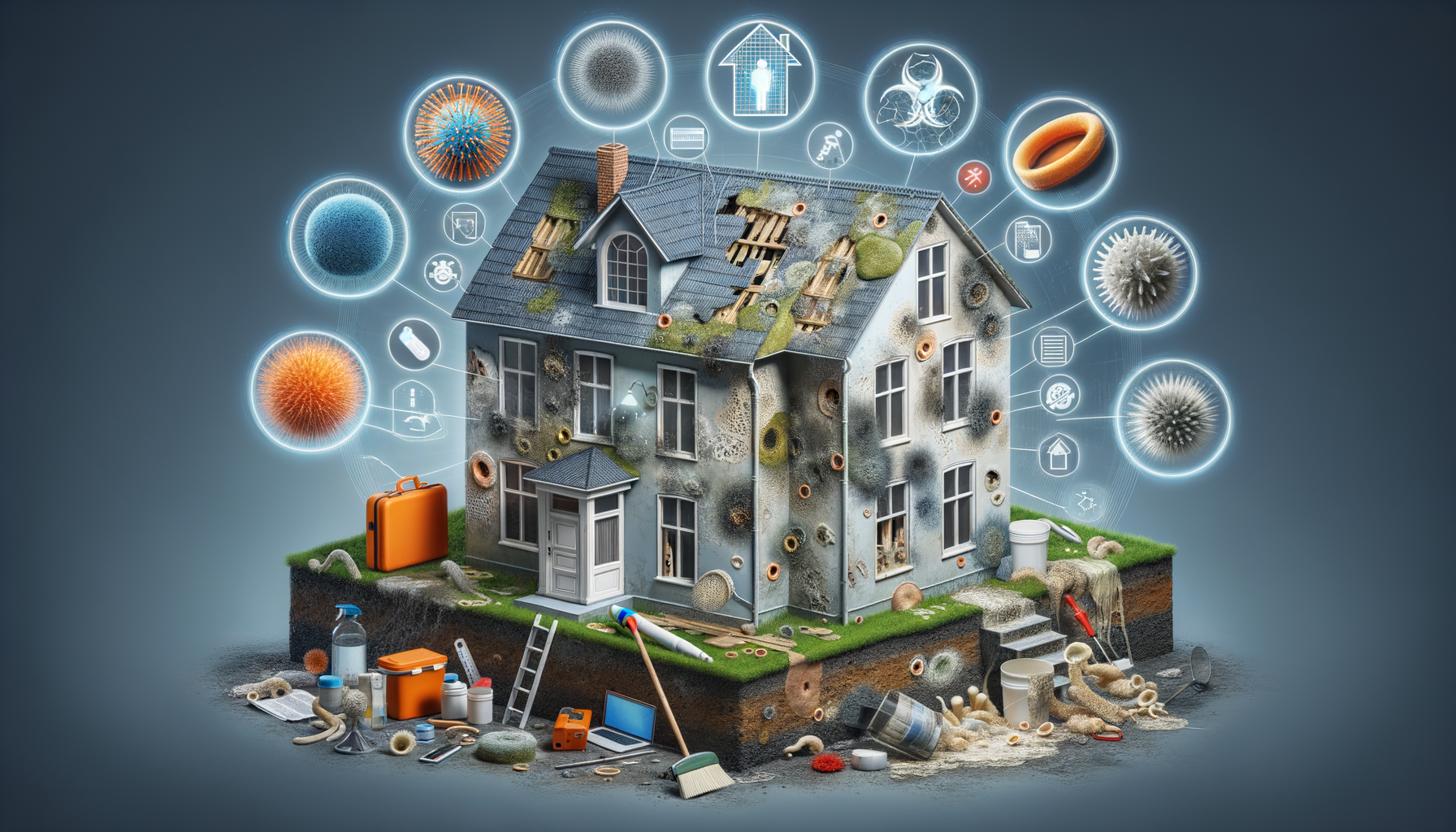Introduction to Mold and Its Dangers
Mold is a type of fungus that thrives in moist environments, often appearing as fuzzy spots in various colors such as black, green, or white. While it might seem harmless, mold can pose significant health risks, especially for those with respiratory issues or weakened immune systems. Understanding what mold is and why it’s dangerous is crucial for maintaining a healthy living environment.
Mold releases spores into the air, which can be inhaled and lead to respiratory problems, allergic reactions, and other health issues. Common symptoms of mold exposure include coughing, sneezing, skin irritation, and in severe cases, asthma attacks. The presence of mold in your home can also indicate underlying moisture problems, which, if left unchecked, can lead to structural damage.
It’s important to be proactive in identifying and addressing mold in your home to safeguard your health and preserve the integrity of your living space.
How to Detect Mold in Your Home
Detecting mold early can prevent its spread and mitigate health risks. Here are some tips to help you identify mold in your home:
- Visual Inspection: Look for discolored spots on walls, ceilings, and floors. Mold often appears in damp areas like bathrooms, basements, and around windows.
- Odor: Mold has a distinctive musty smell. If you notice this odor, it’s a strong indicator of mold presence.
- Water Damage: Check for signs of water damage, such as peeling paint, warping, or water stains, which can create ideal conditions for mold growth.
If you suspect mold but can’t see it, consider hiring a professional to conduct a thorough inspection. They can use specialized equipment to detect hidden mold and assess the extent of the problem.
Step-by-Step Guide to Removing Mold
Once you’ve identified mold in your home, it’s essential to take action promptly. Follow this step-by-step guide to safely remove mold:
- Protect Yourself: Wear protective gear such as gloves, masks, and goggles to avoid exposure to mold spores.
- Contain the Area: Seal off the affected area to prevent spores from spreading to other parts of your home.
- Remove Moldy Materials: Dispose of porous materials like drywall and carpeting that are heavily infested with mold.
- Clean Surfaces: Use a mixture of water and detergent to scrub mold from non-porous surfaces. For stubborn mold, a solution of bleach and water can be effective.
- Dry the Area: Ensure the area is thoroughly dried to prevent mold from returning. Use dehumidifiers and fans to speed up the process.
For extensive mold infestations, it may be necessary to hire a professional mold remediation service to ensure complete removal and prevent recurrence.
Preventing Mold Growth in the Future
Prevention is key to keeping your home mold-free. Here are some strategies to help you prevent mold growth:
- Control Humidity: Keep indoor humidity levels below 60% by using dehumidifiers and air conditioners.
- Ventilate: Ensure proper ventilation in areas prone to moisture, such as bathrooms and kitchens. Use exhaust fans to remove moisture-laden air.
- Fix Leaks: Regularly check for and repair leaks in roofs, walls, and plumbing to prevent water accumulation.
- Regular Cleaning: Clean and dry areas susceptible to mold, like shower curtains and window sills, regularly.
By implementing these preventive measures, you can significantly reduce the risk of mold developing in your home.
Conclusion: Safeguarding Your Home and Health
Mold is not just an unsightly nuisance; it poses real health risks and can damage your home if left unchecked. By understanding what mold is, learning how to detect it, and following a systematic approach to remove and prevent it, you can protect your home and health. Remember, maintaining a dry and well-ventilated environment is your best defense against mold growth.
Stay vigilant, and take action at the first sign of mold to ensure a safe and healthy living space for you and your family.



Leave a Reply